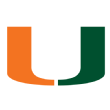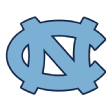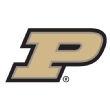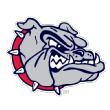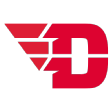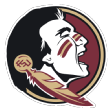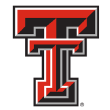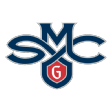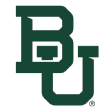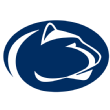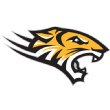Ranking Giannis, Olynyk and the top 10 'juniors' by future potential
Kevin Pelton: Chad, we've debated
our top 10 players from this year's rookie class (Kristaps Porzingis, Karl-Anthony Towns and the rest) and
the 2014-15 sophomore crop (Andrew Wiggins, Jabari Parker, et al.) based on their long-term potential.
Now, how about considering the NBA's "juniors," players who entered the league in 2013-14?
Despite an additional year of watching them play in the NBA, I'm not sure we have much more clarity on this list. What has become clear is this class,
which struggled during its first season, has some surprising NBA contributors.
At the top of the list is the biggest player in the draft,
Rudy Gobert of the
Utah Jazz. The No. 27 overall pick broke out in his second year, claiming a starting spot after
Enes Kanter was traded at the deadline and emerging as perhaps the league's best rim protector.
Gobert has carried that over this season, and his value was reinforced when Utah collapsed defensively during his absence with a sprained MCL. Gobert's offensive game is still a work in progress, but he's shown enough as a playmaker and roll man that it appears he'll be a good starter for years to come with the chance to develop into an All-Star.
Do you have him No. 1 as well?
Chad Ford: This is a tough call for me between Gobert and
Giannis Antetokounmpo. But I lean Gobert for all the reason you mentioned.
His defensive presence is elite and there's enough potential there as an offensive player to believe he'll have an impact on that end too. I also love Gobert's work ethic and how he's continued to work on his game.
Interestingly, the fact that Gobert slid to No. 27 shows a real weakness in the draft evaluation process. Early in the 2012-13 season, Gobert was considered a top-10 pick, and he was still likely to go in the lottery coming into the NBA draft combine. But a poor performance there combined with lackluster individual workouts torpedoed Gobert's stock.
Had he not had a killer workout for the Jazz right before the draft, he might have slid out of the first round. Clearly, the early scouting process was more accurate than where it ended up. I think NBA scouts (and I) may put too much emphasis on what prospects do in workouts. Gobert is certainly a cautionary tale.
I've sort of tipped my hand on who I have No. 2. Who do you have, Kevin?
Pelton: I also have the Greek Freak, though it wasn't a hard call for me between him and Gobert for No. 1. It's been a bit of a disappointing season for Antetokounmpo, who has made only modest strides in his development. He's still not anything of a 3-point threat, having made 16 triples all season at a 23.5 percent clip, and if he doesn't develop that range, Antetokounmpo might be more of a power forward with great athleticism than a multipositional player.
At the same time, it's surely worth remembering that Antetokounmpo is younger than one-third of the players drafted in the 2015 first round, including more than two years younger than
New York Knicks rookie
Jerian Grant. Time is still very much on his side, which is why I'd put him ahead of older third-year players who are better today.
Ford: Antetokounmpo is my second choice as well. He's still a youngster in basketball terms, but there are so many things to love. His skill level and feel for the game for his size are remarkable.
While his development does seem to have stalled a bit, I still see so much untapped potential. He still needs to be a more credible threat from 3, but overall I think he could be an All-Star in a couple of years.
Antetokounmpo also fell too far in the draft, though it's hard to argue with where he was drafted. He was a complete unknown. The competition he played against wasn't elite. Every scout felt like he was several years away.
But so far, he's hit his ceiling and if he continues to do it, I think he could pass Gobert in a few years -- that's why I'm torn.
After those two, things get a lot fuzzier for me, Kevin.
Who do you have at No. 3?
Pelton: To me it's pretty clearly
C.J. McCollum. In his first year as a starter, McCollum has proven he can score with anyone, ramping up his usage rate to 27 percent of the Blazers' plays while maintaining his efficiency at precisely the same level as last season.
His size is a bit of an issue at shooting guard next to
Damian Lillard, but McCollum showed enough playmaking chops to run the team when Lillard missed time in late December and early January. McCollum averaged 26 points, 6.5 assists and 5.5 rebounds in those six games, and perhaps more importantly Portland went 4-2 without its best player. That's heady stuff.
Agree, Chad?
Ford: I am a little torn between McCollum and
Victor Oladipo, two undersized combo guards. Oladipo is much better defensively. McCollum is much better offensively.
I'm going to go with offense here. McCollum's scoring ability and his 3-point jumper make him one of the most lethal scoring threats in the league. And I agree with you that while he's undersized as a 2, he's a good enough passer that if Lillard wasn't around he could easily be the team's point guard.
It will be interesting to see if Portland can keep the two together when McCollum hits restricted free agency.
Again, I think I tipped my hand to who I have at No. 4.
Who do you have, Kevin?
Pelton: Here's where things get a little interesting, because I don't have Oladipo. Instead, I have
Kelly Olynyk fourth.
Olynyk's rating in
ESPN's real plus-minus (plus-4.0 points per 100 possessions) is second among all NBA juniors, behind Gobert. I think that reflects Olynyk's unique skill set. He's a 7-footer who looks natural shooting and handling the ball from the perimeter because of his background playing guard before a growth spurt, as well as defending in space.
Olynyk is shooting better than 41 percent from 3-point range this season, and while that's probably not going to continue, it's pushed his career mark higher than 37 percent. Among 7-footers with at least 300 career 3-point attempts,
per Basketball-Reference.com only
Dirk Nowitzki (38.3 percent) has been more accurate beyond the arc.
So maybe Tommy Heinsohn
wasn't so crazy after all?
(Yes, yes, he actually was.)
Ford: That's more than defensible. Olynyk was fifth for me. But it's taken me a while to warm up to him. On the other hand, I've always been a big Oladipo fan and while he hasn't become the player I hoped he could become, there's a lot to like.
Oladipo's defense has always been his calling card. While I don't think he's quite risen to the level I thought he could get to pre-draft, he has all the tools to lock others down.
And he continues to show improvement as an offensive player -- both as a shooter and a playmaker. Oladipo is never going to be a pure point guard, but he can handle the position in a pinch.
So, who's No. 5?
Pelton: We're flip-flopped here, as I do have Oladipo fifth. I still haven't quite figured out how Oladipo can become an efficient scorer without developing 3-point range, but there are times where his athleticism makes him nearly impossible to stop one-on-one and Scott Skiles' arrival does seem to have boosted his individual defense.
One of the traits that made Oladipo so attractive to the Magic was his work ethic, and I expect him to keep getting better through his mid-20s.
Ford: I was a pretty big skeptic toward Olynyk on draft night. I wondered how his game would translate to the next level. For the first few years in Boston, that skepticism remained high. But after watching him this year, I think he has a chance to be a really good pro.
Every time he's on the court, good things happen for the Celtics. In a league that values bigs who can stretch the floor and make great basketball decisions, Olynyk should thrive. He may be the best young player on the Celtics.
Who do you have in your next 5?
Pelton: These were probably more difficult choices for me. Here's where I settled:
6.Kentavious Caldwell-Pope
7. Mason Plumlee
8. Steven Adams
9. Robert Covington
10. Gorgui Dieng
Caldwell-Pope has developed into a terrific defender who's really good at cross-matching and using his size and length against point guards. He won't be 22 until next month and will be a valuable role player for years if he can merely get to league average from 3-point range.
The 2013 draft produced a bunch of useful centers, many of them older players with lower ceilings but more immediate value. Plumlee has been a revelation as a playmaker in Portland, Adams has established himself as part of Oklahoma City's core at age 22 and Dieng has proven an effective complement for
Karl-Anthony Towns in a positionless frontcourt. Add
Festus Ezeli to that group; he was on my list before his knee surgery scared me off.
Covington's shooting has slumped this season, but he's got role-player skills as a solid defender at both forward spots and a dangerous outside shooter in addition to the ability to create his own shot. Cracking the top 10 is impressive for a player who went undrafted less than three years ago.
How much did we overlap here?
Ford: We agree on about three out of five players. The rest of my list:
6. Dennis Schroder
7. Otto Porter
8. Mason Plumlee
9. Steven Adams
10. Kentavious Caldwell-Pope
I'm surprised you didn't have Schroder. Schroder has always been intriguing for me as a German
Rajon Rondo with most of the same strengths and weaknesses. I'd love to see him unleashed as the floor leader for a team.
I continue to like the development of Porter, though until he gets a dangerous 3-point shot, he'll always be a little lacking.
Plumlee's real-plus minus is
just a tick under Gobert's this season. He's been especially effective on the defensive end for Portland. Adams is limited offensively as well, but provides a real boost defensively.
So on the positive side, we've named a dozen players in all, several of whom have been pleasant surprises.
But what's shocking is how poorly the big names in the draft fared.
In fact, most of those guys didn't show up in our lists, including several players who were considered the potential No. 1 pick.
Anthony Bennett,
Cody Zeller,
Alex Len,
Trey Burke and
Ben McLemore didn't make either of our lists -- all top 10 picks, with Bennett going No. 1 to Cleveland.
Neither did rookie of the year
Michael Carter-Williams, who has been traded once and had been rumored to be available again at the trade deadline.
Nor did
Shabazz Muhammad, a late lottery pick who comes off the bench in Minnesota. And of the top 10 picks, only Porter made my list. (No. 6 pick
Nerlens Noel was injured during college and was ranked with the NBA sophomores.)
We knew it was a weak draft, but that's brutal.



